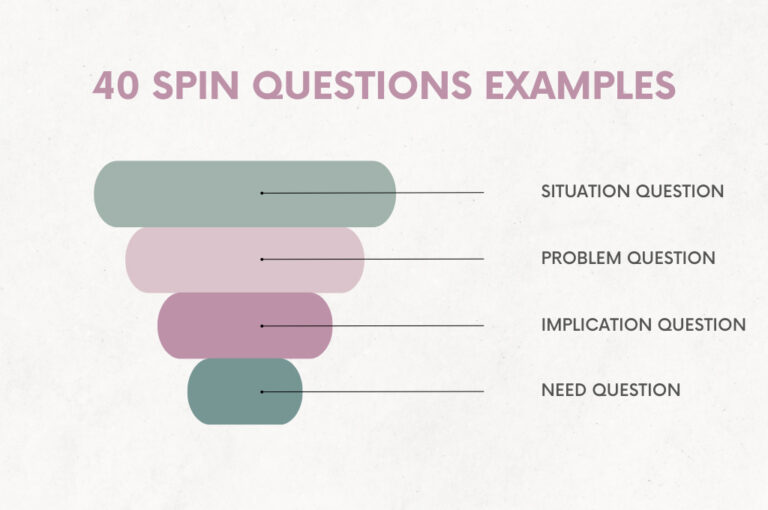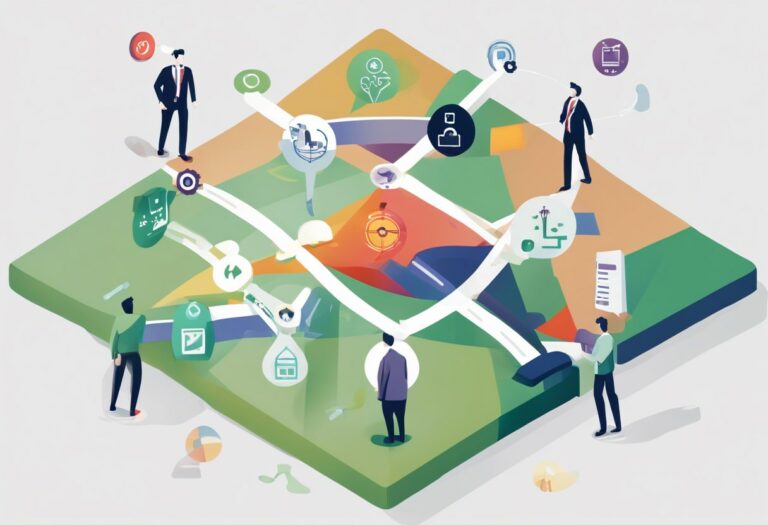How a Land and Expand Strategy Can Help You Drive Growth

In today’s competitive landscape, businesses are continuously looking for strategies to drive growth and bolster their market presence. The land and expand sales approach emerges as a powerful strategy in this context, allowing companies to not only secure new customers but also grow their accounts over time. This article delves into the key aspects of this approach, highlighting its benefits, providing a comprehensive strategy checklist, and offering insights on how to adapt sales and marketing processes for successful implementation. Through a focus on customer retention and revenue boosting during the “expand” phase, businesses can unlock new growth opportunities and strengthen their customer relationships.
Understanding the Land and Expand Sales Approach
The land and expand sales approach is a strategic method used by businesses to scale their growth. Initially, the focus is on acquiring a new customer with a relatively small commitment, known as “landing”. Once the initial deal is secured, the strategy shifts towards “expanding” within the customer’s organization. This involves increasing the customer’s usage of products or services, leading to larger accounts and more significant sales over time. This approach aligns well with the modern preference for building relationships and providing value before pushing for bigger sales. By focusing on customer success and satisfaction, companies can effectively use the land and expand strategy to drive growth.
Advantages of the Land and Expand Approach
The land and expand strategy offers numerous advantages for companies looking to grow their presence and increase revenue. By starting small and focusing on incremental growth within existing customer accounts, businesses can achieve sustainable growth while maintaining strong relationships. Here are some key benefits:
- Reduced Risk: Starting with smaller deals decreases the initial barrier to entry for customers. This approach minimizes risk for both the company and the customer, encouraging them to try out the product or service.
- Increased Customer Lifetime Value: By focusing on expanding relationships with existing customers, businesses can significantly increase the customer lifetime value (CLV). It is often easier and more cost-effective to sell to customers who are already familiar with the product or service.
- Improved Customer Relationships: The strategy relies on developing a deep understanding of the customer’s needs and providing tailored solutions. This approach fosters trust and loyalty, which are crucial for long-term relationships.
- Better Product Feedback and Innovation: Close interaction with customers during the expansion phase provides valuable insights into how products or services can be improved. This feedback loop can drive innovation and ensure the offering remains competitive.
- Efficient Use of Sales and Marketing Resources: Targeting existing customers for expansion is often more efficient than acquiring new ones. Companies can allocate resources more effectively, focusing on high-growth potential areas within their current customer base.
These advantages highlight why the land and expand approach is becoming increasingly popular among businesses aiming to grow their footprint in a competitive market. By building on initial successes and nurturing customer relationships, companies can unlock significant growth opportunities.
Checklist for Land and Expand Strategy
To successfully execute a land and expand strategy, certain key components need to be in place. This checklist serves as a roadmap for companies aiming to leverage this approach for growth.
1. Clearly Defined Target Market
Identifying a specific target market is crucial. Understanding who your ideal customers are, what challenges they face, and how your product or service can solve their problems sets a solid foundation for any land and expand strategy.
2. Effective Positioning and Messaging to Attract Suitable Customers
Once your target market is defined, developing clear and compelling positioning and messaging is essential. This helps attract the right customers and communicates the value of your offering efficiently, encouraging them to make that initial purchase.
3. Achievement of Product-Market Fit
Finding the perfect product-market fit is key to a successful land and expand strategy. Your product or service must effectively address the needs and pain points of your target market, ensuring satisfaction and laying the groundwork for expansion.
4. Sales Team and Process Alignment for the Strategy
Your sales team and processes must be aligned with the land and expand approach. This includes training on how to nurture relationships, recognize opportunities for expansion, and tailor offerings to meet the evolving needs of customers.
5. Customer Success Plan to Convert New Users into Devoted Customers
Designing a customer success plan is vital. It should focus on onboarding new users efficiently, ensuring they see value in your offering and become advocates for your brand. This sets the stage for future expansion within their accounts.
6. Selected Expansion Methods to Boost Net Revenue Retention
Choosing the right methods for expansion is critical for increasing net revenue retention. Whether it’s through upselling, cross-selling, or introducing new products, the strategy should be based on deep customer insights and tailored to their ongoing needs.
Adapting Your Sales & Marketing Processes for Successful Land
To ensure the initial “land” phase of your strategy is successful, adapting your sales and marketing processes is key. By focusing on effective customer acquisition tactics, you set the stage for future expansion. Here’s how you can adapt these processes.
Leveraging Growth Loops for Enhanced Customer Acquisition
Growth loops are a powerful way to drive customer acquisition. This strategy involves creating self-reinforcing systems that generate more users. For instance, a well-designed product can encourage users to invite others, who in turn invite more users, creating a loop. By incorporating feedback and referral mechanisms into your product or service, you can create a continuous cycle of acquisition and growth.
Increasing Website Traffic Through SEO and Content Marketing
SEO and content marketing are essential for increasing online visibility and attracting potential customers. By optimizing your website for search engines and producing valuable content that addresses your target market’s questions and needs, you can pull in more traffic. High-quality, SEO-driven content not only attracts visitors but also establishes your brand’s authority, making it a crucial part of landing new customers.
Establishing Referral Programs for Gaining Customers
Referral programs can significantly boost your customer acquisition efforts. Happy customers are often willing to refer friends and colleagues if there’s an incentive. By offering rewards for both the referrer and the referee, you can encourage existing customers to become brand advocates. This not only helps in landing new accounts but also strengthens loyalty among existing customers.
Retaining New Customers and Boosting Average Revenue During the “Expand” Phase
Once you’ve successfully landed a customer, the next phase is to expand within their account. This phase is crucial for increasing average revenue and ensuring long-term customer retention. Here are strategies to ensure successful expansion.
Focusing on User Adoption for Customer Success
A key element in the expand phase is ensuring that new customers fully adopt and get value from your product or service. By offering comprehensive onboarding, training, and support, you can help customers integrate your solutions into their workflows, leading to higher satisfaction and loyalty.
Defining and Tracking Customer Success Objectives
Setting clear objectives for customer success and tracking them diligently is vital. These metrics can include usage frequency, feature adoption rates, and customer satisfaction scores. Monitoring these allows you to proactively address issues and identify opportunities for further engagement and expansion.
Gathering Customer Insights to Enhance Customer Experience
Continuous improvement of the customer experience is essential for the expand phase. By gathering and analyzing feedback through surveys, customer interviews, and usage data, you can identify pain points and areas for improvement. This not only aids retention but also uncovers expansion opportunities.
Ensuring Product Stickiness for Sustained Relationships
Product stickiness, or the extent to which customers consistently use your product, is critical for long-term retention. Enhancing product features to meet evolving customer needs, offering personalized experiences, and building a community can all contribute to increased stickiness.
Analyzing User Activity to Spot Expansion Opportunities
Deep analysis of user activity and behavior can reveal valuable insights into potential expansion opportunities. Identifying patterns of usage can help you understand which features are most valued and where there may be unmet needs or additional use cases within the customer’s organization.
Timing Upselling and Cross-Selling Techniques Effectively
Effective upselling and cross-selling are integral to the expand phase. Timing these techniques correctly—by aligning them with the customer’s needs, recognizing milestones, and responding to signals of readiness to upgrade or adopt more services—can significantly boost average revenue per user without risking customer satisfaction.
Final Thoughts
The land and expand strategy represents a nuanced approach to business growth that prioritizes not just the initial sale but also the nurturing of long-term customer relationships. By focusing on targeted customer acquisition, ensuring product-market fit, and aligning sales and marketing efforts, companies can lay a solid foundation for expansion. The progression to the expand phase requires a deliberate effort to foster user adoption, understand customer needs deeply, and spot opportunities for further engagement. Implementing this strategy effectively demands a committed, customer-centric mindset across all levels of the organization. As businesses continue to navigate competitive markets, those that can master the delicate balance of landing new customers and expanding within existing accounts are likely to see sustained success and growth. Remember, the key to unlocking this growth is not only in acquiring customers but in keeping them engaged, satisfied, and open to deeper business relationships over time.






